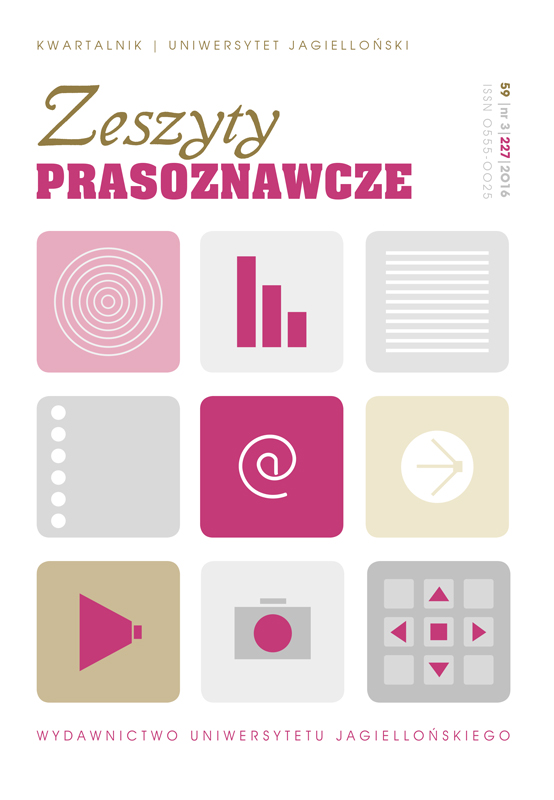From “enlightenment” to “seduction”. The evolution of persuasive strategies in Polish magazines for the youngest children (in the last two decades of the twentieth century)
From “enlightenment” to “seduction”. The evolution of persuasive strategies in Polish magazines for the youngest children (in the last two decades of the twentieth century)
Author(s): Anna Wileczek, Agnieszka MiernikSubject(s): Communication studies
Published by: Wydawnictwo Uniwersytetu Jagiellońskiego
Keywords: Magazines for children; persuasive strategies; history of children's press
Summary/Abstract: In this paper authors made a review of the strategies used by the editors of magazines for children. They showed their methods of presenting cognitive and educational contents in the eighties and nineties of the twentieth century. The changes and developments which took place in this field were caused by the political changes. The magazines for children published in the era of the Polish People’s Republic required from the reader careful reading, intense concentration and a lot of patience. From the point of view of the young generation which likes colored, original and interactive media the magazines issued in that period may seem boring. In turn, the conviction created by pop culture that “what is boring cannot be important” limited the scope of contents to prepared sensations, commonness and banal uniqueness. After 1989 publishers in their search for new forms of winning over the youngest readers produced new multimedia magazines combining in a single issue traditional version (paper form), television (programme form) and online (web page). In order to make magazines more attractive in the spirit of unification to make them “magazines for everyone” meant that the seduction of the reader was no longer done by the contents, but by attachments, such as gadgets and “online continuations”. It was the most pronounced direction of the metamorphosis of the magazines for the young readers in the process of adapting the press to the realities of the consumer society which has begun at the end of the eighties of the last century. It was the price paid for the dream of making the magazines as popular as possible and enticing a large number of readers. At the same time it was a chance for the editors to survive in the world of hard economic reality.
Journal: Zeszyty Prasoznawcze
- Issue Year: 2016
- Issue No: 3 (227)
- Page Range: 582-598
- Page Count: 17
- Language: English

